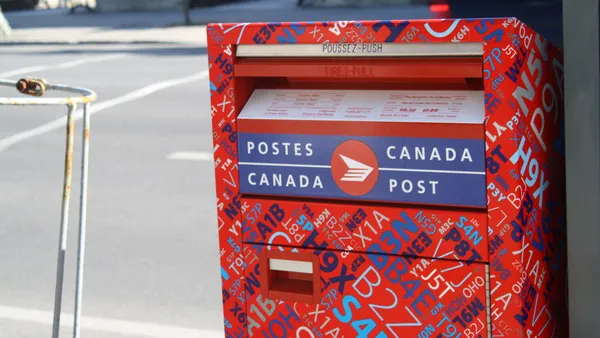Dive Brief:
- Trucking shipments and expenditures are at an all-time high, and volumes continue to increase — so much so that rates are expected to rise as a result.
- Higher rates will put more pressure on shippers — smaller shippers especially — which could spur them to seek better freight brokers to acquire rates.
- According to a white paper recently released by Cerasis, a top trend for freight and logistics in 2018 is the "lines defining peak shopping seasons will blur." That means steady high demand will pressure shippers, carriers and 3PLs to deliver fast turnarounds and optimize time and capacity.
Dive Insight:
It's a good time to be a 3PL — tight capacity and high volumes mean more business and revenue opportunity, and the demand for an efficient, cost-effective and reliable 3PL continues to rise.
But with the growth spurt come the challenges. As noted by the Cerasis white paper, "variable logistics operations will become standard."
Keeping up with changing consumer tastes is the priority, and that means maintaining the flexibility to change orders, change delivery addresses and adjust delivery timeframes according to demand. The competition is ramping up, and the potential entrance of Amazon to the 3PL market is no coincidence.
Shippers will look for the savviest 3PLs that can deliver and not break the bank. As rates increase and the capacity crunch shows no sign of easing, it's becoming increasingly important for 3PLs to negotiate lower rates for their clients and smooth their shipping processes.
David Greathouse, vice president of North American sales for Target Freight Management, thinks there will be a trend for shippers to pursue 3PLs that offer competitive cost savings plans as rates climb.
"We work with small to mid-size companies that don’t necessarily have the market power, so they come to us and we help them leverage better pricing," Greathouse told Supply Chain Dive. "We can typically save them anywhere to 20%. We’re seeing a 6% rate increase every six to nine months, so we know every six to nine months shippers are seeing an increase in their invoices."
In fact, if rates climb high enough (which is a real possibility due to rapid driver turnover and sky-high demand), it could become very difficult for smaller shippers to obtain reasonable rates if they don't use a 3PL.
"We’re going to see rate increases as well, but ours are going to be a lot less than what shippers see on their own," Greathouse said.
The Cerasis white paper backs up Greathouse's assessment. "As demand for 3PLs grows, supply chain and logistics professionals will face greater pressure to improve shipper-3PL relationships. Instead of treating logistics providers as unavoidable, shippers, in their closer look at top logistics trends, will look at logistics providers as a strategic partner in ensuring adherence to customer expectations and delivering on such expectation."
Furthermore, the white paper argues that in order to stay competitive, 3PLs may also need to offer "unique" services, "such as invoice auditing, automated freight classification, better rates on dimensional pricing, and a host of last-mile services, which Amazon has already taken great strides in with the creation of Amazon Key."













